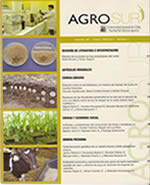Different types of pre-treatment of coffee pulp to promote its use
Main Article Content
Abstract
The present investigation evaluated the process of delignification of the coffee pulp as a residue of the agroindustry through the alcoholic fermentation process that results from a biological pre-treatment, using the white rot fungus Pleurotus ostreatus L. which is recognized by its easy adaptation to the medium and hydrolytic capacity on lignin, and also for having a high nutritional potential for human consumption. Four different contact times between the substrate and the fungus (40, 30, 25, 20 days) were assesed. The average percentage of delignification in each analyzed time presented statistically significant differences (p <0.05). However, a greater percentage of delignification (51.422%) was registered in the sample evaluated at 30 days, allowing to improve the utilization of the by-product when compared with the chemical pre-treatment carried out using an acidic and alkaline medium, where the percentage of delignification achieved is 42.5144% and 40.713%, respectively. The alcoholic fermentation process was carried out using the Saccharomyces cerevisiae Meyen ex E.C.Hansen yeast on the different delignified substrates with the different pre-treatments (biological 30 days, acid repeat 1, alkaline repetition 3 and without hydrolysis). To recognize the efficiency of this process, the concentration of reducing sugars at the beginning and at the end of the fermentation were quantified. There was a higher availability in the biological pre-treatment sample (89.51 g L-1) and with a higher percentage of consumption of the sugars during the process when compared with the other samples evaluated.

